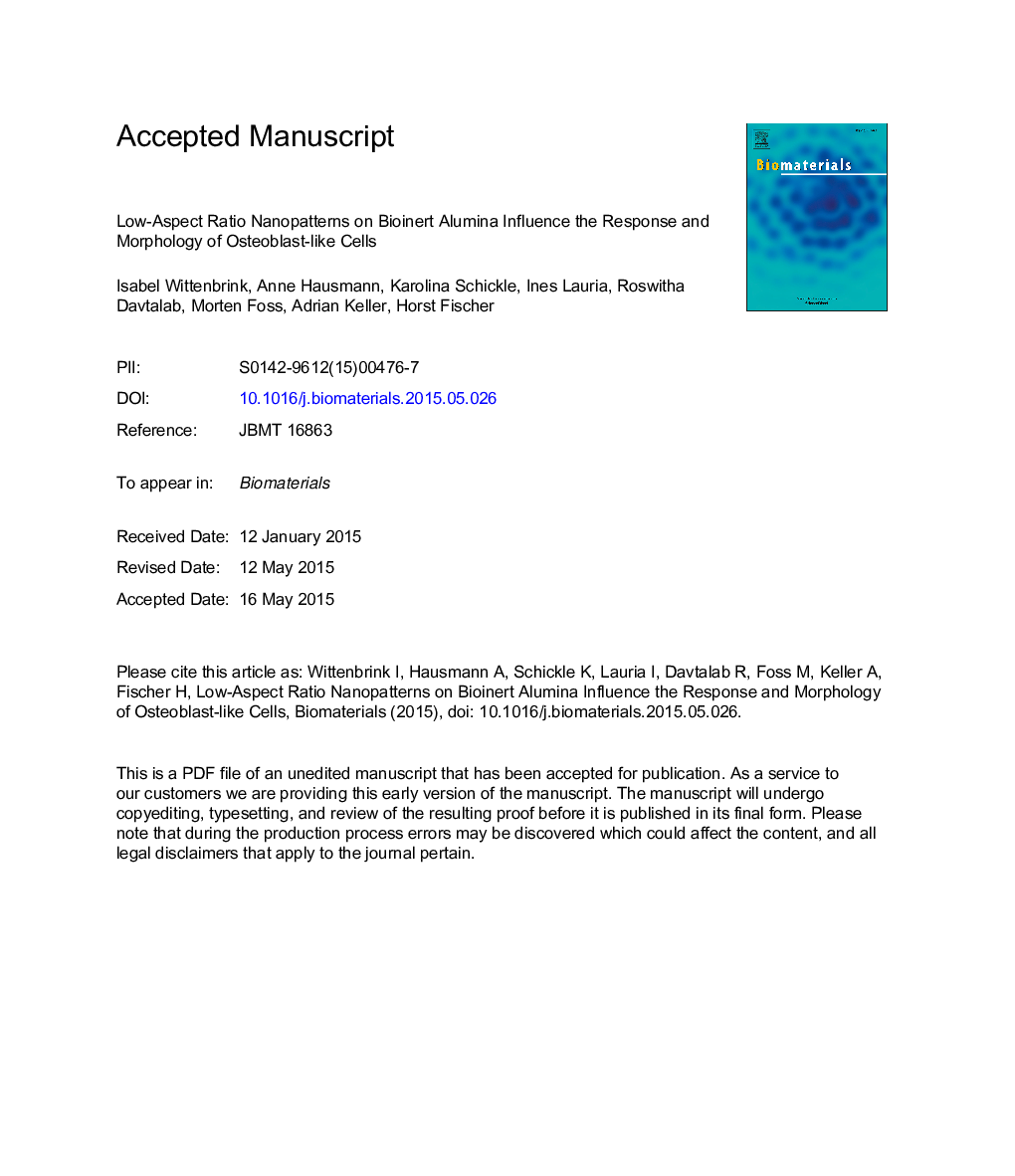| Article ID | Journal | Published Year | Pages | File Type |
|---|---|---|---|---|
| 6485527 | Biomaterials | 2015 | 28 Pages |
Abstract
Topographical features on the nanometer scale are known to influence cellular behavior. The response of specific cell types to various types of surface structures is currently still being investigated. Alumina ceramics play an important role as biomaterials, e.g., in medical and dental applications. In this study, we investigated the influence of nanoscale surface features with low aspect ratio (< 0.1) on the response of osteoblast-like MG-63 cells. To this end, low-energy ion irradiation was employed to produce shallow nanoscale ripple patterns on Al2O3(0001) surfaces with lateral periodicities of 24Â nm and 179Â nm and heights of only 0.7 and 11.5Â nm, respectively. The nanopatterning was found to increase the proliferation of MG-63 cells and may lead to pseudopodia alignment along the ripples. Furthermore, focal adhesion behavior and cell morphology were analyzed. We found that MG-63 cells are able to recognize surface nanopatterns with extremely low vertical variations of less than 1Â nm. In conclusion, it is shown that surface topography in the sub-nm range significantly influences the response of osteoblast-like cells.
Related Topics
Physical Sciences and Engineering
Chemical Engineering
Bioengineering
Authors
Isabel Wittenbrink, Anne Hausmann, Karolina Schickle, Ines Lauria, Roswitha Davtalab, Morten Foss, Adrian Keller, Horst Fischer,
